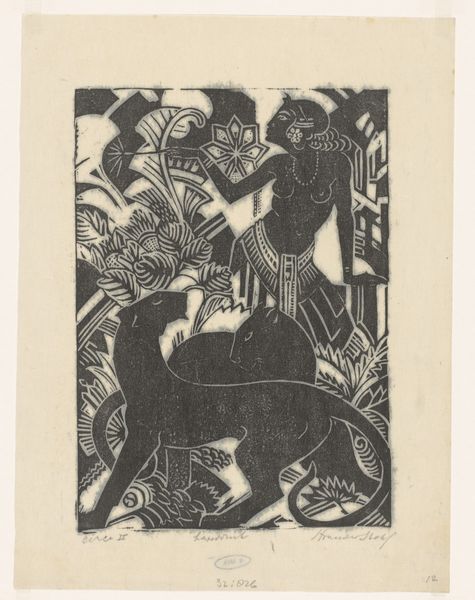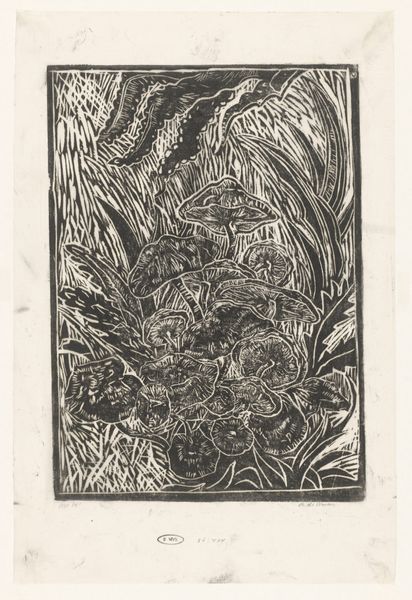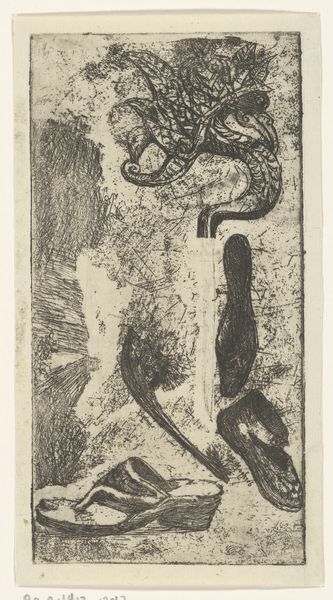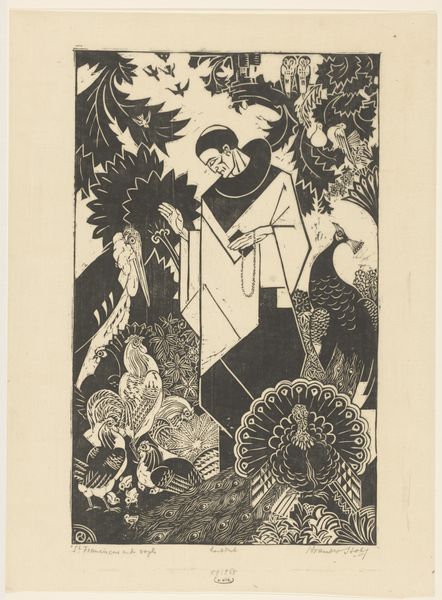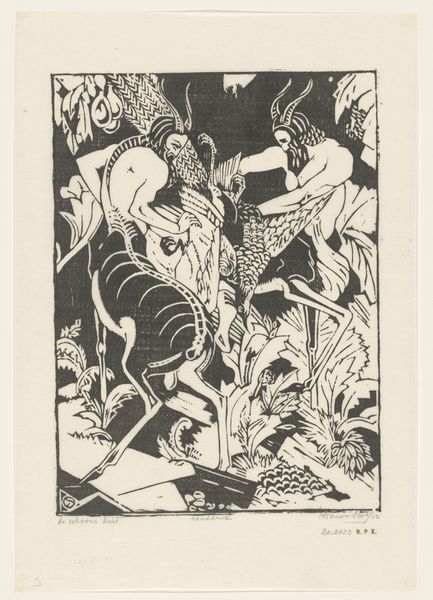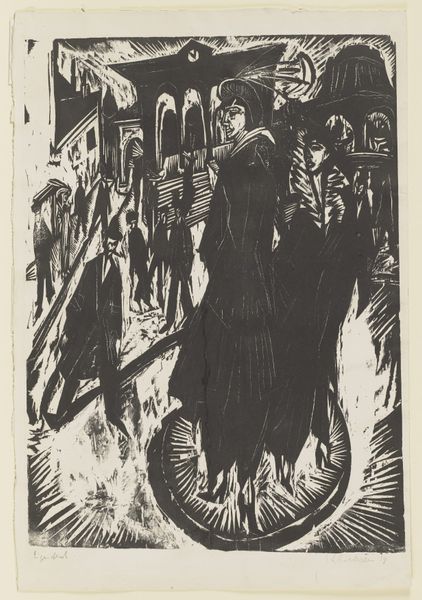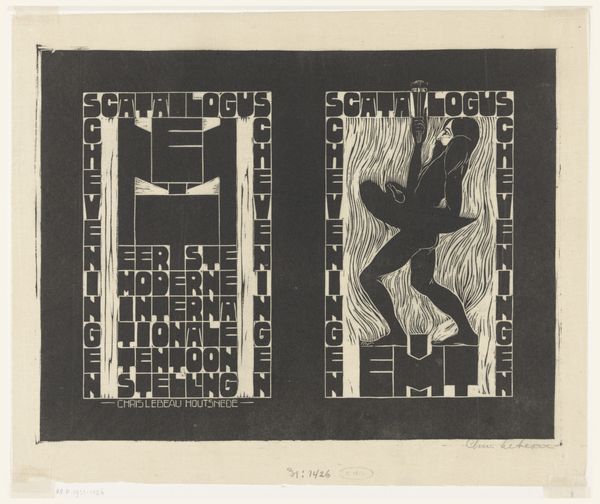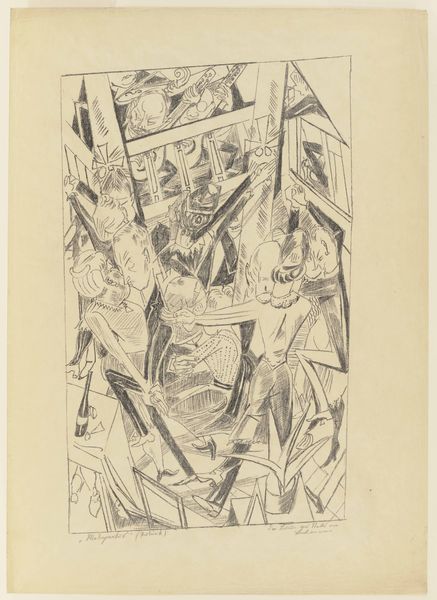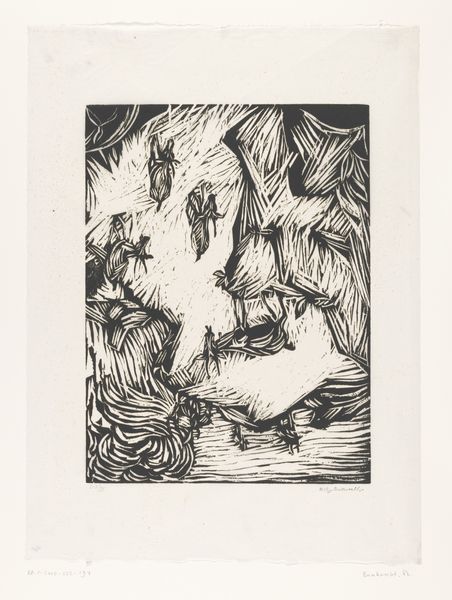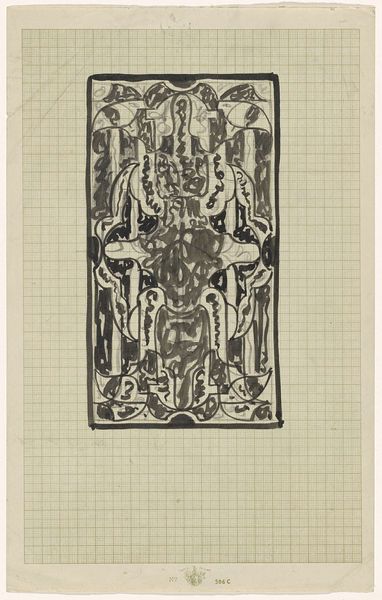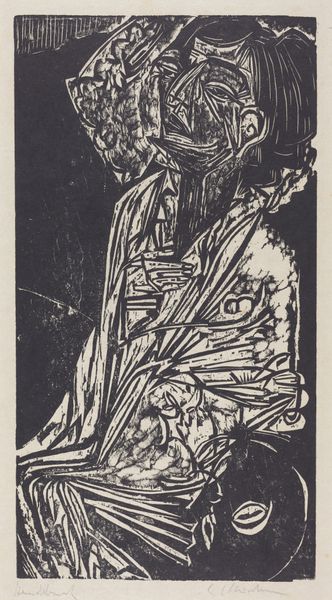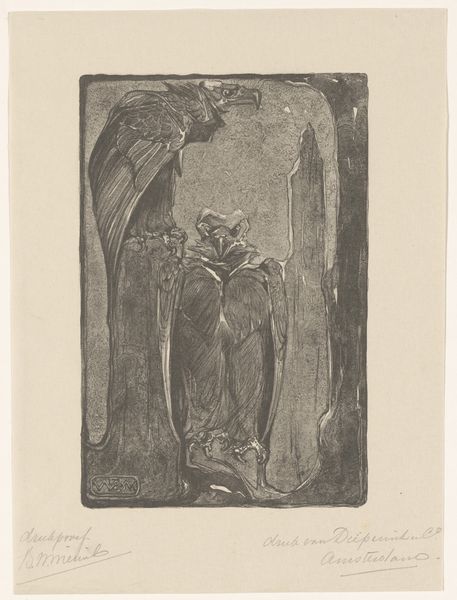
graphic-art, print, woodcut, engraving
#
graphic-art
#
art-nouveau
#
pen drawing
# print
#
old engraving style
#
pen-ink sketch
#
woodcut
#
line
#
pen work
#
decorative-art
#
engraving
Dimensions: height 588 mm, width 386 mm
Copyright: Rijks Museum: Open Domain
Curator: Well, look at this captivating piece: Carel Adolph Lion Cachet's "Kalenderblad April 1894," residing right here at the Rijksmuseum. It’s a gorgeous woodcut print infused with Art Nouveau flair, wouldn't you say? Editor: Intricate! Almost oppressive, in a beautiful way. The stark black ink makes the whole thing feel weighty, like a blacksmith calendar hanging over his anvil, marking out a medieval forge’s schedule of backbreaking labor. Does that make sense? Curator: Absolutely! I see that sense of density and meticulous planning reflecting social organization – think of it as advertising culture’s attempt to systematize time itself, rendered visible as commodity. A kind of proto-digital clock of its age. Editor: Mmm. The stylized forms, especially the horseman, he looks as though he's leaping out of myth! So much tension between the rigidity of the calendar and the wildness of nature...or imagined nature. Does it capture spring's bursting-forth? Or tame it into a measured form? Curator: Fascinatingly, that push-pull speaks to wider tensions during the late 19th-century, the encroaching mechanization facing nostalgic yearning for artisanal creation. Line engraving became quite en vogue then, often embraced by the establishment in decorative arts – a way perhaps to embrace the “old engraving style,” without necessarily old socio-political values. Editor: Yes, look at the lines; the thickness contrasts adding so much to its mood, making you look from a detail, to the calendar in general…as a whole composition! A question - it looks so clearly crafted and personal, yet meant for public display...how personal *could* the art have actually been at this point? Curator: I'd imagine that personal artistic integrity comes into direct friction against both the practical demands of making artwork, but also the societal expectations of “acceptable art”. Artists were navigating a lot with rapidly transforming markets and consumerist mentalities…but it’s certainly more fun thinking of an old-world calendar for forges instead! Editor: Well said! Makes one really contemplate all that can spring forward from single-print designs. Curator: It does indeed! I’m thankful for having experienced and shared its spirit once more with you.
Comments
No comments
Be the first to comment and join the conversation on the ultimate creative platform.
